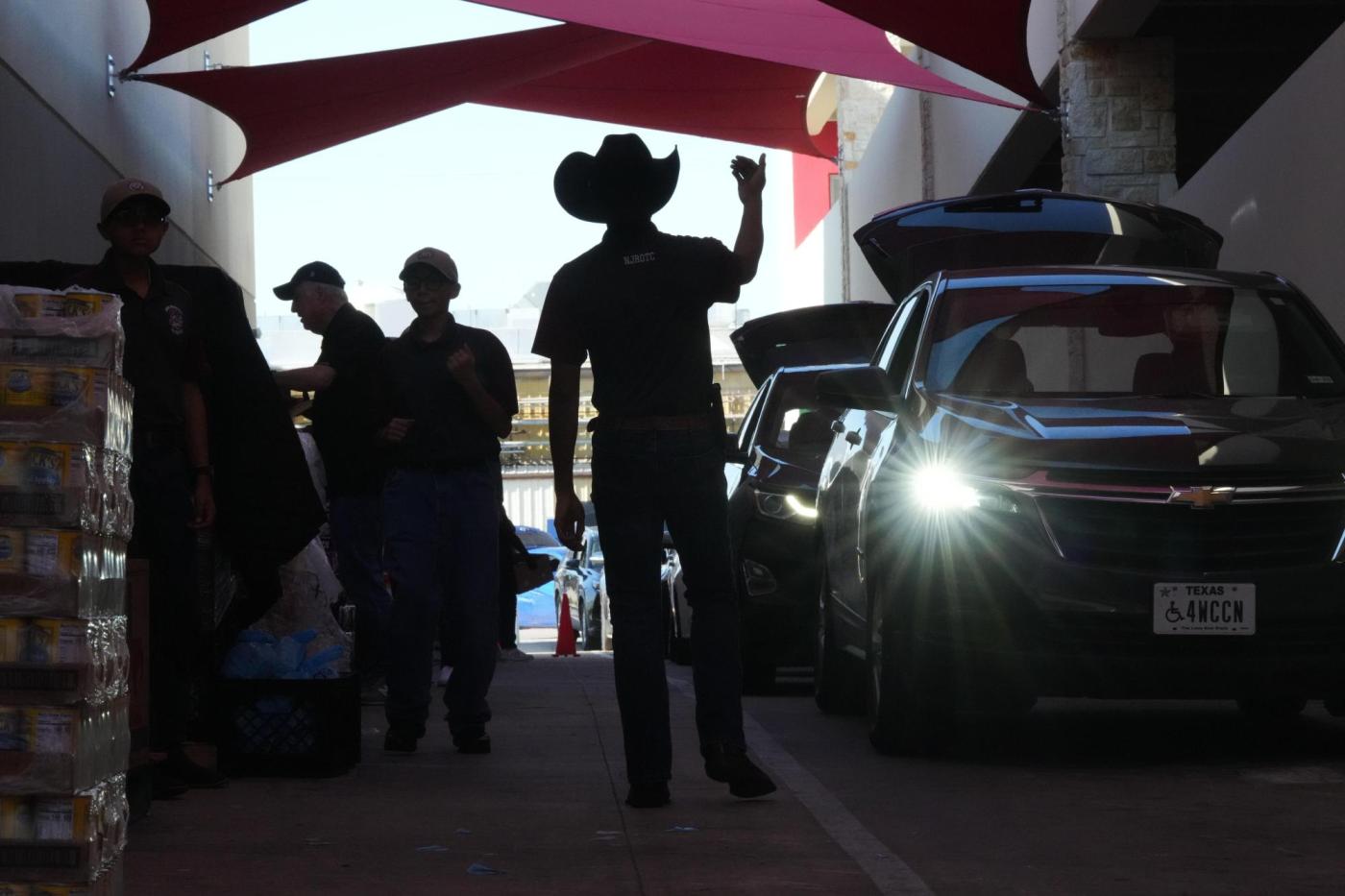By GEOFF MULVIHILL and MICHAEL CASEY, Associated Press
President Donald Trump’s administration now says that SNAP food aid for November will be reduced less than originally announced, the latest in a political and legal saga that impacts how about 1 in 8 Americans can buy groceries.
The U.S. Department of Agriculture (USDA) said in a court filing late Wednesday that it caught an error in its earlier plan to reduce the maximum benefit by half and said that beneficiaries would instead get up to 65% of their usual assistance. However, some people will see deeper cuts, with some receiving no benefits from the Supplemental Nutrition Assistance Program (SNAP) for November. If the government shutdown continues into December, there’s currently no plan for funding at all.
Benefit cards could be loaded as soon as Friday in Louisiana and will take longer in most other states.
### Administration Says Cuts Won’t Be as Deep After Twists and Turns
What the nation’s nearly 42 million people receiving food aid can expect has been in flux for weeks. The Trump administration said last month that it would not pay benefits at all for November due to the federal shutdown.
Last week, two judges ordered the government to pay at least partial benefits using an emergency fund. On Monday, the administration said it would not use additional money but that the required fund had enough to cover half the usual benefits for November.
The next day, President Trump appeared to threaten not paying the benefits at all unless Democrats in Congress agreed to reopen the government. His press secretary later clarified that the partial benefits were being paid for November and that future payments are at risk if the shutdown continues.
Late Wednesday, the USDA, which runs the program, said in a filing in federal court in Rhode Island that it had done further analysis and found that the maximum benefit will be 65% of the usual amount.
Speaking at the Greater Boston Food Bank in Massachusetts Thursday morning, Democratic Gov. Maura Healey criticized the administration for sending mixed messages: “Come on. You know, you’re going to partially fund food for Americans? You’re going to let people starve?”
### The Benefit Reduction Math
The benefit reduction means most households will see cuts of more than 35%. While SNAP reductions like this have never come into play before, there is a decades-old federal regulation for how they should be carried out.
Under the formula, benefits are reduced by 35% for households receiving the maximum amount, and households of the same size would have benefits reduced by the same dollar amount. For example, a family of three would see a reduction of $275, and a person living alone would have benefits reduced by $105, according to Ben Molin, who runs SNAP Screener, a website about benefits.
This means that the lowest-income families would be impacted the least.
An analysis by the progressive Center on Budget and Policy Priorities found that in the 12 months ending in September 2024, just over one-third of beneficiaries received the maximum amount.
There’s another wrinkle that applies only to households with one or two people: their minimum benefit would be $16. Some larger households are in line to receive nothing at all for November.
### Impact on Individuals
Carmel Scaife, a former day care owner in Milwaukee who hasn’t been able to work since receiving multiple severe injuries in a car accident seven years ago, normally receives $130 a month from SNAP. Despite bargain hunting, she says that amount is not nearly enough for a month’s worth of groceries.
Scaife, 56, said any cuts to her benefit would force her to tap more into her Social Security income to pay for groceries. “That’ll take away from the bills that I pay,” she said. “But that’s the only way I can survive.”
### When Cards Will Be Recharged Depends on the State
States are working through calculations and system updates to get partial payments out to beneficiaries. Louisiana officials have said they could start rolling cards by Friday, with Connecticut and North Carolina expected to follow by next week. In some states, the timeline remains unclear.
Alabama’s Department of Human Resources said this week that it’s uncertain how long the process will take. “This will be a cumbersome process, including revised eligibility systems, state notification procedures, and ultimately delayed benefits,” the department said in a statement.
The USDA warned in a court filing earlier this week that it could take some states months to get the partial benefits onto debit cards used for the program.
### Additional Measures
Most states have increased funding for food banks and some have launched programs to provide direct state-funded benefits to SNAP recipients.
### Legal Challenges and Ongoing Litigation
Lawyers for the USDA and the cities and nonprofit groups that sued to keep funding rolling in November were expected to present their cases at a hearing on a request for a judge to require full SNAP funding for the month.
The groups argued in a court filing in federal court in Rhode Island that partial benefits would not “adequately remedy the harm.”
The government responded that it is using other funding to ensure child nutrition programs can keep running through the shutdown. “It cannot be arbitrary and capricious for USDA to decline to raid an entirely different program, to the tune of billions of dollars,” the agency said in a filing, “in the mere hope that Congress will fix the ensuing deficit through the general appropriations process.”
Associated Press reporters Sara Cline in Baton Rouge, Louisiana; Susan Haigh in Hartford, Connecticut; and Gary Robertson in Raleigh, North Carolina, contributed to this article.
https://www.twincities.com/2025/11/06/snap-benefit-cuts/
